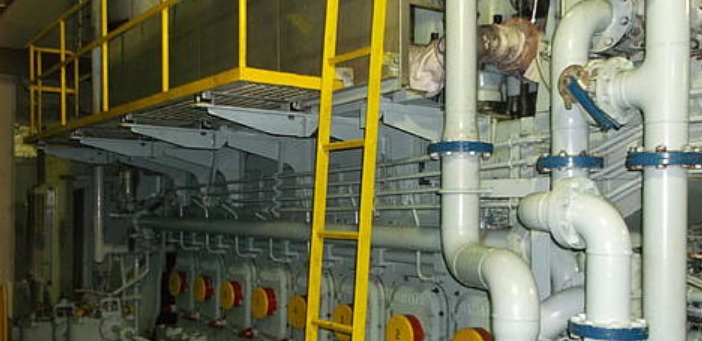In UK Club’s latest ‘Lessons Learned’ publication, Capt. David Nichol presented and analyzed a fall of a duty engineer, during a routine task onboard a container ship. The incident highlighted issues regarding the necessity of using intermediate guard rails when working aloft, as well as how seaway conditions can impact such tasks.
The incident
The duty engineer and oiler were assigned the job of replacing a damaged diesel generator exhaust gas thermometer requiring a section of the exhaust manifold to be dismantled. Prior to commencement of the job, a pre-work meeting was carried out and all necessary tools and equipment made ready.
After first removing the manifold covers and a section of insulation to gain access, the engineer used a compressed air hose to blow away particles of dust and dirt from the exposed exhaust pipe. While doing this, he leant backwards to avoid dust blowing into his face, with the result that he lost his balance and fell from the platform on to the deck more than two metres below. The engineer was given first aid and hospitalised at the next port of call, where he was diagnosed with a broken clavicle (collarbone), as well as other soft tissue injuries to arm and shoulder.
Analysis
- By design, the generator engine platform was fitted with a single fixed guard rail of about one metre in height but no lower intermediate rail. This meant that, when the engineer lost his balance while crouching down to perform his work, he was able to fall between the rail and the platform. After performing a post-accident assessment, the crew fitted horizontal chains half way between the upper rail and the platform.
- At the time of the accident, the vessel was rolling in a moderate sea and swell which may have contributed to the engineer losing his balance.
- Although he was reported to be wearing eye protection, the incident also highlights the need for seafarers to exercise caution when working with compressed air equipment.
Lessons Learned
- A thorough on-site risk assessment prior to commencement of work could have identified the hazard allowing appropriate precautions to be taken, by way of rigging additional guards or the wearing of a safety harness
- Where there is risk of personnel falling from elevated access platforms, walkways or open hatchways, top and intermediate guard rails should be fitted or rigged in such a way as to prevent persons falling through
- Seafarers should carefully consider the necessity of performing work aloft when a ship is rolling and pitching in a seaway
- Compressed air can be very effective for cleaning surfaces and components but it must be used with care, never directed at body parts and with all appropriate PPE worn






























































